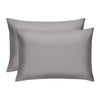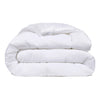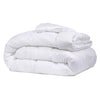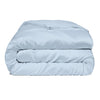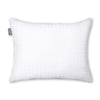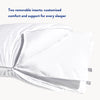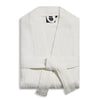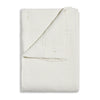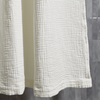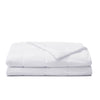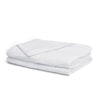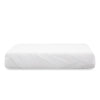The Daily Miracle
The Best Way on How To Wash Silk Pillowcase
Published
November 12, 2022
Author
Bridget Reed

Ahh… Is there anything more luxurious than a silk pillowcase?
Imagine coming home after a long day, taking a warm bath, cozying up in your PJs, slipping into bed, and laying your head on a nice, cool pillow. Silk is soft, smooth, and cool. Using a silk pillowcase can make every night feel like a retreat at a beautiful spa.
But what happens when it’s time to wash your pillowcase? Are there certain care instructions to follow so you don’t ruin it?
We’ll dive into the details of caring for silk so you can sit back and relax in luxury.
What Is Silk?
Silk is a material that originated in China in approximately the 3rd millennium BCE. It is produced by the silkworm and then used in multiple different ways to make luxurious goods. Silk was a trendy material until World War II, when nylon and other synthetic fabrics took over the fashion industry.
How To Wash a Silk Pillowcase
A silk pillowcase is a popular thing to splurge on to take your sleep routine to the next level. It can be quite an investment, but some find it worth it.
If you’re ready to take the plunge, you should be ready to take the necessary steps to maintain the quality. Keeping it properly clean can help extend the life of your pillowcase so you can enjoy it for a long time.
How To Machine Wash Your Silk Pillowcase:
One of the downsides to silk is that you can’t easily machine wash them like you can with Supima cotton.
- Get a garment bag, don’t let your pillowcase fly around in your washer
- Turn the pillowcase inside out before washing
- Use gentle laundry detergent
- Wash on the most delicate cycle possible
How To Handwash Your Silk Pillowcase
The best way to wash a silk pillowcase is by hand. Handwashing, while rather time-consuming, helps keep the fibers in the silk safe and strong.
Here are some basic handwash instructions:
- Fill a sink with cool or cold water
- Use a small amount of mild laundry detergent
- Turn your silk pillowcase inside out
- Place it in the water and gently move the water around in the sink
- Drain the sink
- Rinse the pillowcase to remove all excess detergent
Avoid wringing or pulling the pillowcase while it is wet. While this may feel like a natural thing to do to get water out of the item, it can damage the fibers.
What Type of Laundry Detergent Should You Use?
While choosing a laundry detergent may not seem as dramatic as choosing between a comforter and a duvet, for instance, there are a few things to consider when selecting a washing solution.
There are a few options to choose from, including:
- Powder
- Liquid
- Tablet
- Pod
A newer type of laundry detergent is a Detergent Sheet, which is an excellent alternative to others. Laundry detergent sheets tend to be made with less harsh chemicals, and they’re extremely eco-friendly.
In a time when there are one million plastic bottles purchased every minute, waste from laundry detergent bottles is a large contributor. By switching to laundry detergent sheets, you can reduce your plastic use and help make the planet a greener place.
Other benefits of laundry detergent sheets include:
- Reduced storage space. No more giant plastic jugs taking up space in your cabinets or on countertops.
- Fewer chemicals go back into our water after use.
- Fully dissolving sheet, you don’t have to worry about leftover pod casing getting stuck on your clothes and sheets.
Can You Dry a Silk Pillowcase?
While you can dry most other bedding sets, we do not recommend drying a silk pillowcase, at least not in a traditional clothes dryer. The best way to dry silk is to hang it dry. Be careful where you hang it, as drying silk directly in the sun can result in fading.
If you do not have access to a clothesline, you may put your silk pillowcase in the dryer on a no-heat setting as a last resort. This is not recommended, but we understand laundry limits!
Can You Iron a Silk Pillowcase?
To iron or not to iron, that is the question. Ironing silk is not necessary, but if your pillowcase is looking a little wrinkled and you want to quickly take care of it, you can iron it on the lowest heat setting possible.
You can also manually smooth wrinkles out of your pillowcase by gently pressing your hands out from the center of the fabric to the outer edges.
What Are the Benefits of Using a Silk Pillowcase?
Skin Hydration
While our body and brain rest during sleep, our skin is still fighting a battle. The battlefield? Our pillowcases.
If you’re prone to dry skin, you’ll want to take a look at the type of pillowcase you’re using. Some materials absorb moisture faster than others. So even if you’re taking care to do your evening routine, the moisturizer and serums may be wasted on your pillowcase instead of your face.
Silk can help keep the product on your face, not the pillowcase. It is naturally moisture-repelling, so it won’t absorb what is on your face.
Wrinkle Prevention
Say goodbye to pillowcase lines! It’s typical to wake up after a rough night’s sleep or mid-afternoon nap with deep creases in your skin from your blankets. However, these impressions left by your pillowcase can end up as real, permanent wrinkles over time.
The smoother surface of silk can slow down the appearance of the lines. At the very least, you’ll save yourself some embarrassment if you happen to oversleep and wake up just in time for a Zoom call with your boss!
Germ Reduction
Our faces are on our pillows for a long time. This means all the germs and bacteria on our faces or on our pillowcases are pressed up against us for hours on end. Silk is better at keeping germs at bay.
While silk is a great option for a clean sleeping surface, other choices may be even better for you. Bedding options like hypoallergenic, antimicrobial pillowcases resist 99.9% of bacteria growth. Regardless of what type of pillowcase you use, wash it consistently to keep it nice and clean.
Healthier Hair
As you toss and turn at night, your hair can take a beating. The wrong pillowcase can add to frizz, breakage, and split ends.
Silk, in turn, allows hair to rest on something smooth and reduces friction. It can also help hydrate your hair. If you have treated or colored your hair, silk may aid in the healing process and help your hair regain strength and reduce damage.
Cooling Properties
The cool side of a silk pillowcase is… both sides! If you sleep warm or just enjoy the feeling of a cool pillowcase on your cheek, a silk pillowcase may suit you well. Silk is ultra-breathable and moisture-repelling, keeping it cool all night long.
Alternatives to Silk Pillowcases: The Miracle Option
If you’re not completely sold on the idea of a silk pillowcase, that’s okay. There are plenty of other options that you may prefer. At Miracle Made, we adore Supima cotton for our towels and sheets — but that’s just us!
There are pros and cons to each type of pillowcase. What you choose will depend on your personal needs and what makes you the most comfortable. Whatever you choose, now you know how to care properly for a silk pillowcase!


